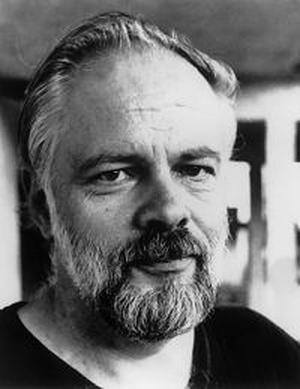
Children are more open than adults are; they haven’t yet formed the concrete opinions which limit imagination. For that reason, children’s literature has a more palpable sense of the mystery with which literature should always be imbued. Too often adult fantasy, instead of forming a distinct reality, seems exactly like our own world (with special effects, of course). Tolkien’s antiquated earth with its humanoid populations elicits wonder: you become a believer. Another exception is science fiction writer Phillip K. Dick, who doesn’t seem interested in gimmicks. His stark form of writing cuts to the heart of his world and of humanity. But such writers are rare.

I recently reread ‘A Wrinkle in Time,’ the first book that made me fall in love with math and science. Madeleine L’Engle implants a sense of wonder, at the beauty of the world and of its grandiosity. She uses elements from physics such as multidimensional spacetime and tesseracts to infuse her fantastical and spiritual work with a scientific base.

‘Wrinkle In Time’ is the first of a quintet, and my favorite book in it, ‘A Swiftly Tilting Planet,’ does the same thing for time that ‘A Wrinkle in Time’ does for space. Charles Wallace travels through the bodies and minds of different characters, including ancient people immersed in a mystical reality. This is a concept which also reverberates in the Tolkien books: humanity stretches back to those with deep wisdom and spirituality. Our hominid ancestors seem abstract and detached, but those of fantasy seem deeply connected to us, bequeathing legacies from millions of years ago upon us. There is something moving in this rich chain to beauty and innocence.

The work of L’Engle is an interesting collection of fantasy, philosophy, religion, and science, but the elements arecohesive. L’Engle doesn’t seem to see any contradiction, and neither do I, because this is my worldview: everything is interconnected. At a certain point L’Engle began to read heavily about physics, the work of Max Planck and Einstein. Later she stated:
“One cannot discuss structure in writing without discussing structure in all life; it is impossible to talk about why anybody writes a book or paints a picture or composes a symphony without talking about the nature of the universe.”
Her religious sentiments are more ambiguous, deviating from those of C.S. Lewis, whom L’Engle admired and borrowed from in her writing. C.S. Lewis writes with certainty of his religon, and his unilateral approach to Christianity doesn’t admit of a doubt. (Despite the paganism inherent within it.) L’Engle, on the other hand, didn’t define herself as a Christian but rather “a writer who is struggling to be a Christian.” In one passage of ‘A Wrinkle in Time,’ L’Engle cites Jesus as a fighter in the war against evil. But a few lines later she adds Ghandi and Buddha, as well as scientists and artists denounced by the Church. Perhaps she was simply alluding to people who brought light and joy to the world. In an interview from 2000, when asked if she was a “Christian writer,” she answered:
“No. I am a writer. That’s it. No adjectives. The first thing is writing. Christian is secondary.”

And her religous views as well as her science seem to have been heavily influenced by Einstein, who said this:
“While it is true that scientific results are entirely independent from religious or moral considerations, those individuals to whom we owe the great creative achievements of science were all of them imbued with the truly religious conviction that this universe of ours is something perfect and susceptible to rational striving for knowledge.”
And this:
“The most beautiful thing we can experience is the mysterious. It is the source of all true art and science. He to whom the emotion is a stranger, who can no longer pause to wonder and stand wrapped in awe, is as good as dead —his eyes are closed.”
The blending of art, of science, and of a sort of cosmological awe seems characteristic of both the writer and the scientist. And in her book L’Engle manages to consolidate Einstein’s amorphous philosophy. She zoomed in on a few planets of her fantasy galaxy, thereby reducing the abstract, barely-graspable notions of cosmology into bit pieces a child could ingest. On a personal level, she helped the small girl I once was develop a notion of the hugeness of the galaxy. Especially in the planet of Camazotz, where the people are like us and yet not like us – human beings, with streets and houses – I felt the tug of familiarity which allowed me to imbibe its strangeness and mystery. Thank you, Ms. L’Engle, for crystallizing for me the mystery of being.
Originally published at tovakrakauer.com


